Introduction
When making art, it is very easy to needlessly overthink, overanalyze and overcomplicate the subject of what one is illustrating, especially if it is unfamiliar territory. Thus, in an attempt to portray the subject more accurately, the artist may dive straight into illustrating the finer details and intricate designs of the subject. Although this might come as a natural to anybody, this often makes the final artwork unbalanced and anatomically askew and may also potentially affect the overall creative workflow of the artist.
Thus, the use of basic shapes is an indispensable foundation of art. It's one of the seven fundamental elements of art, along with line, space, value, form, texture and colour.
Understanding the concept of breaking down complex subjects into rudimentary shapes like squares and circles and utilizing those shapes can help the artist approach the subject in a more undemanding and simple way. This ultimately helps the artist visually portray their ideas more effectively and also helps streamline their artistic workflow and approach.
This article explores the fundamental idea of using basic shapes to illustrate and portray subjects and ideas visually!
Types of Shapes
To start breaking down objects into shapes, let's first see how many different shapes there are. While there is an infinite number of shapes, they can be broadly categorized into two large categories: Organic and Geometric shapes.
Organic Shapes
These shapes are more rounded, free form and most often one of a kind. They're irregular and asymmetrical and are also sometimes referred to as Biomorphic Shapes. These shapes can only be seen once more details are added to geometric shapes.
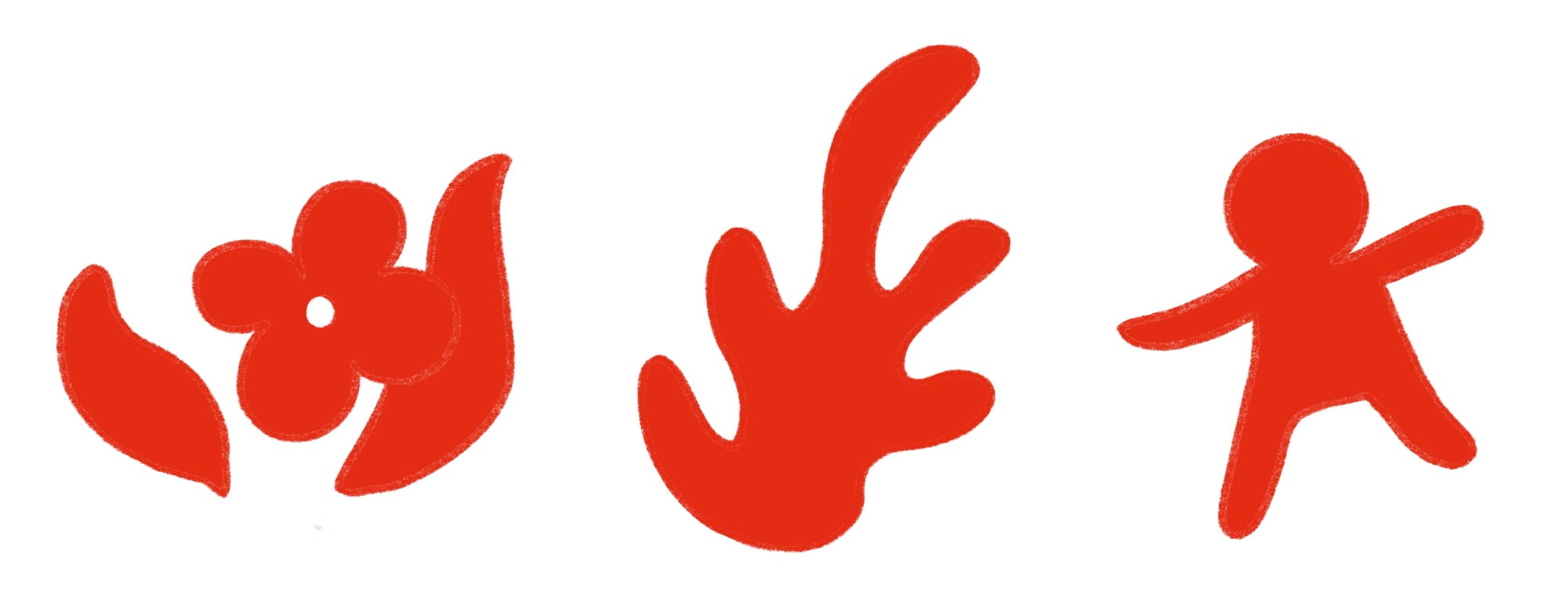
Geometric Shapes
These are the familiar ones, such as squares, rectangles, triangles, and circles, to name a few. These shapes can simply be understood as shapes made using mathematics, as they are precise and regular. Geometric shapes are highly encouraged to be used in the early steps of the drawing as they help build the subject, its proportions and the silhouette more soundly without paying much attention to the details right from the start.
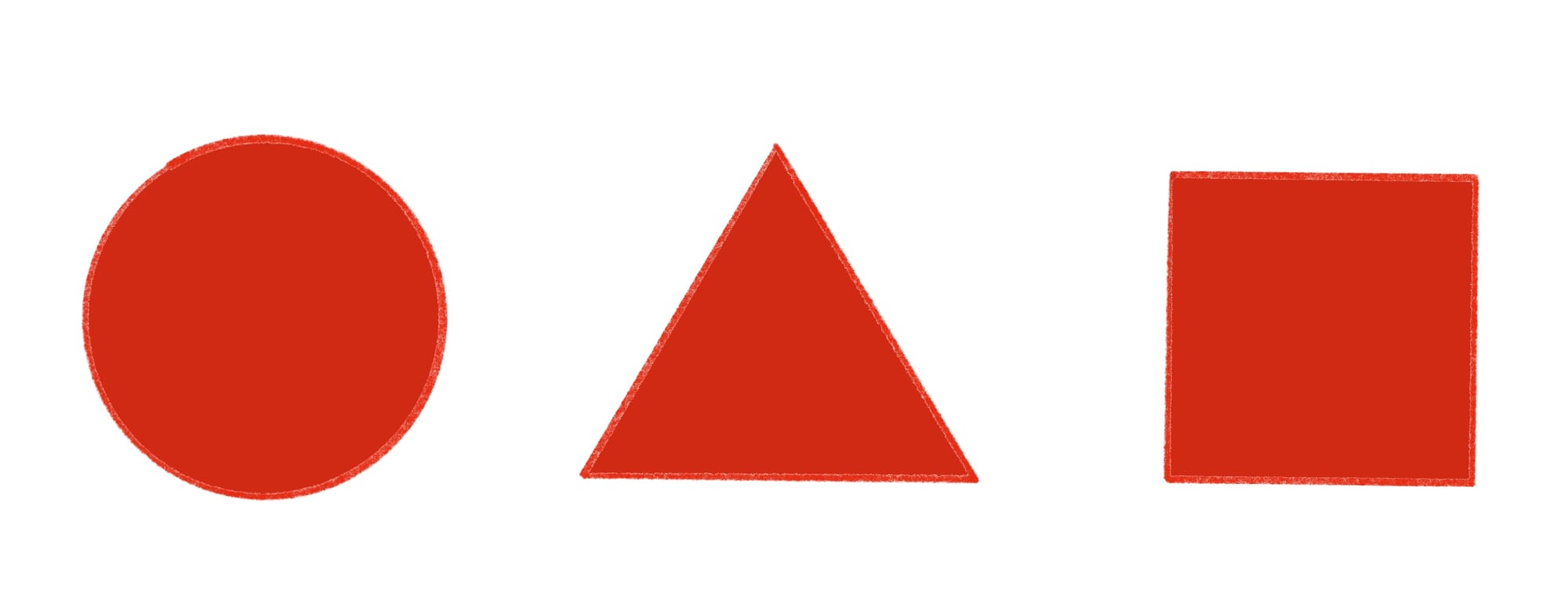
Applying Shapes
Shapes are indispensable in design and art. They assist in sound structural framework, proportions, compositions, silhouettes, etc. This tool can greatly affect the end result of an art project! Now that we've been made aware of the value of using shapes in art and design, we'll move on to how we can start applying it to the world around us.
Viewing the world simplified and in 2D shapes might seem confusing at first, but it will soon come naturally when one's eye is trained. For a start, instead of drawing the subject, let us think of it as drawing the shape of the object.
For example, to start drawing a house, you can first draw the body as a square or rectangle and then the roof as a triangle or a parallelogram. Then you can add details like drawing the windows as squares or the door as a rectangle!
Simplifying Still Life
So now, we'll look at how we can similarly break down the world into the most basic shapes, starting with the simpler still-life objects like a bottle and chair and then moving on to more complex subjects beyond still-life, such as a person or an animal.
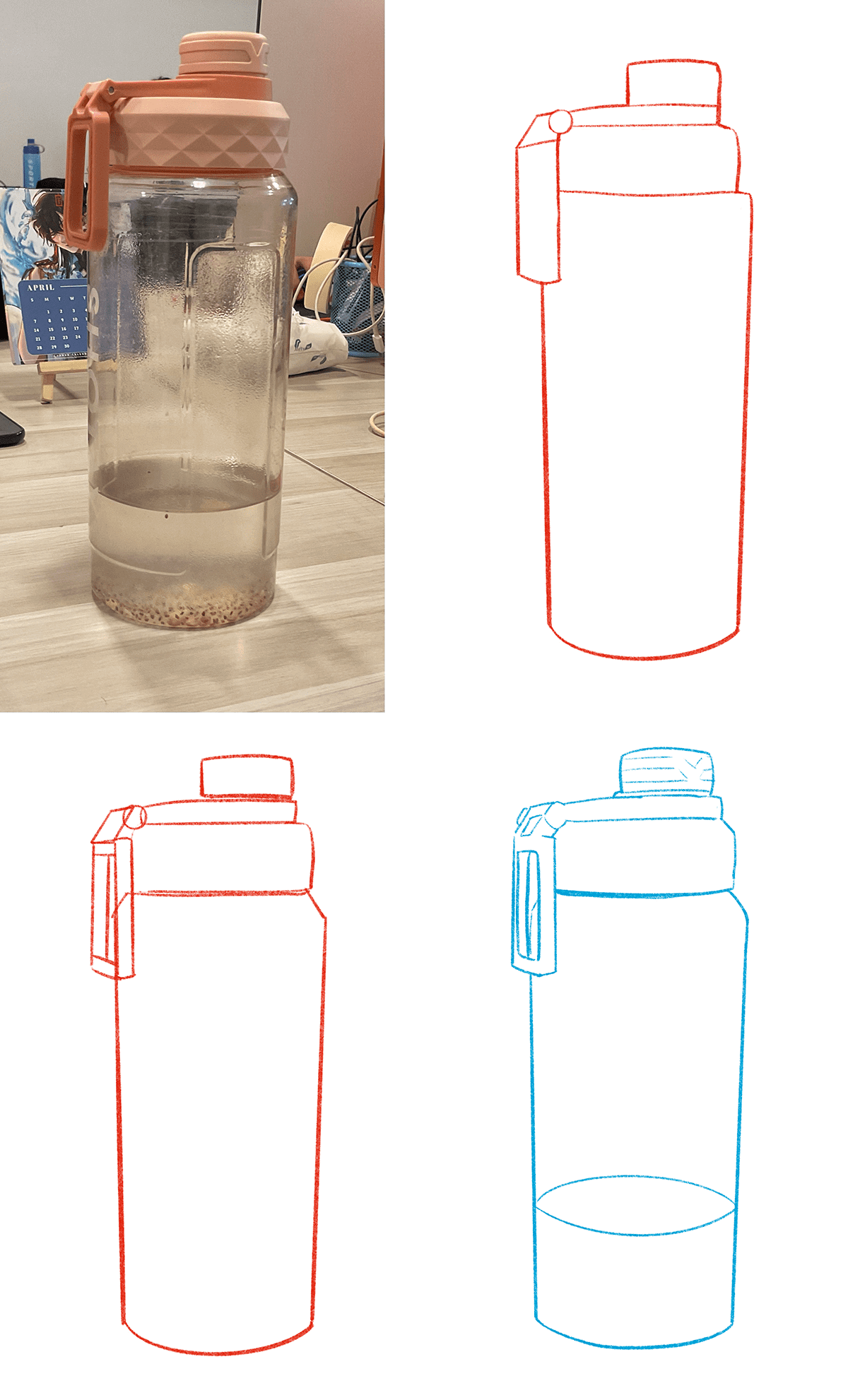
As a start, I've taken an object with a relatively simpler shape, in this case, a water bottle, and broken it down to its base shapes, primarily comprised of geometrical shapes. Here, we can see that even without drawing the small details of the subject, the viewer can identify it as a water bottle! Then, I broke it down even further into more shapes to slowly build on the details. Lastly, I have connected and made adjustments to the shapes and added details, which finally completes the water bottle drawing!
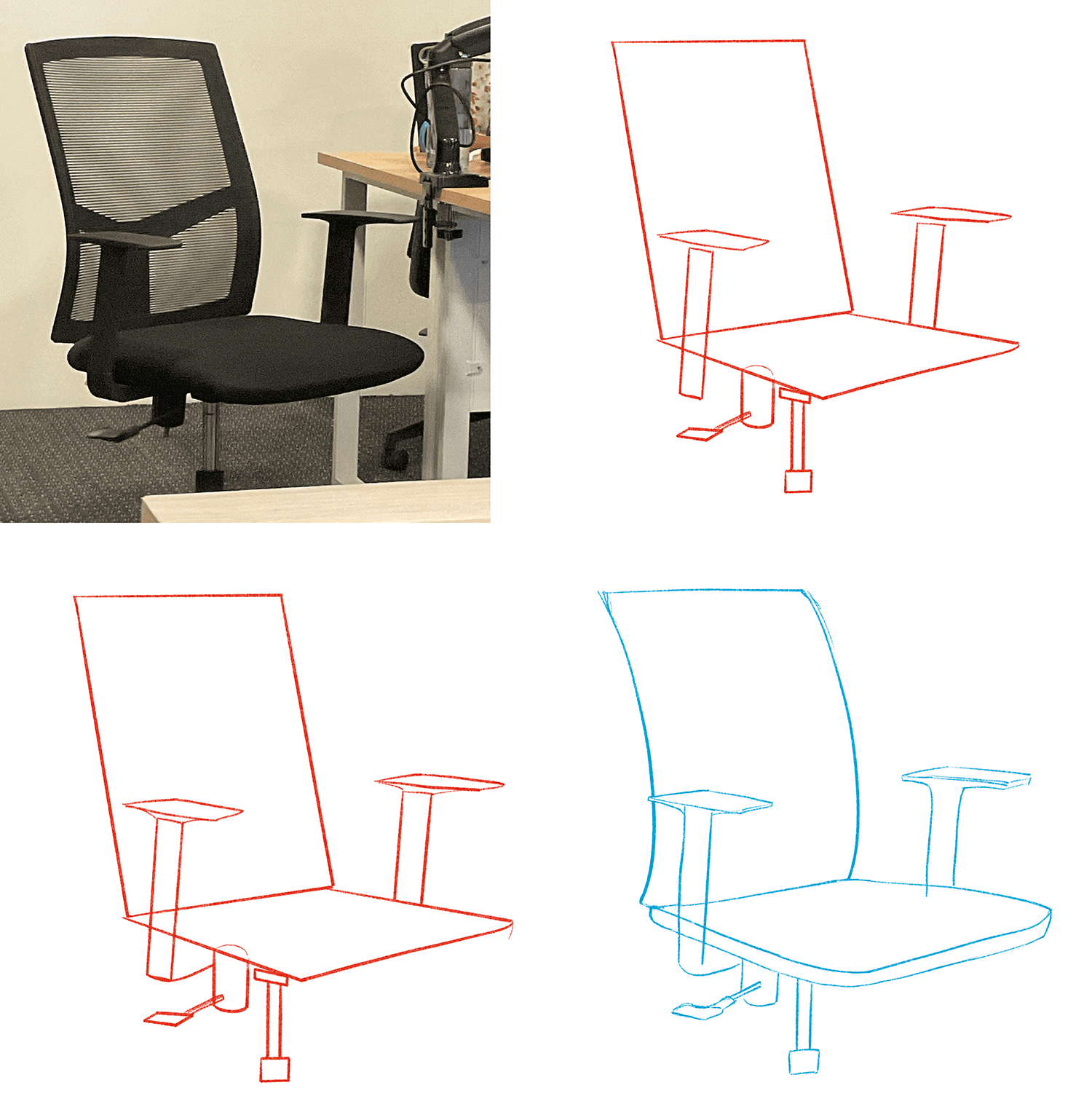
For the second subject, I've used a chair. This object is built on slightly more shapes than the earlier water bottle, but it is still relatively easy to break it down. As the same from earlier, I've broken down the chair into simple geometric shapes such as rectangles and slowly built on the shapes as a guideline to complete the drawing.
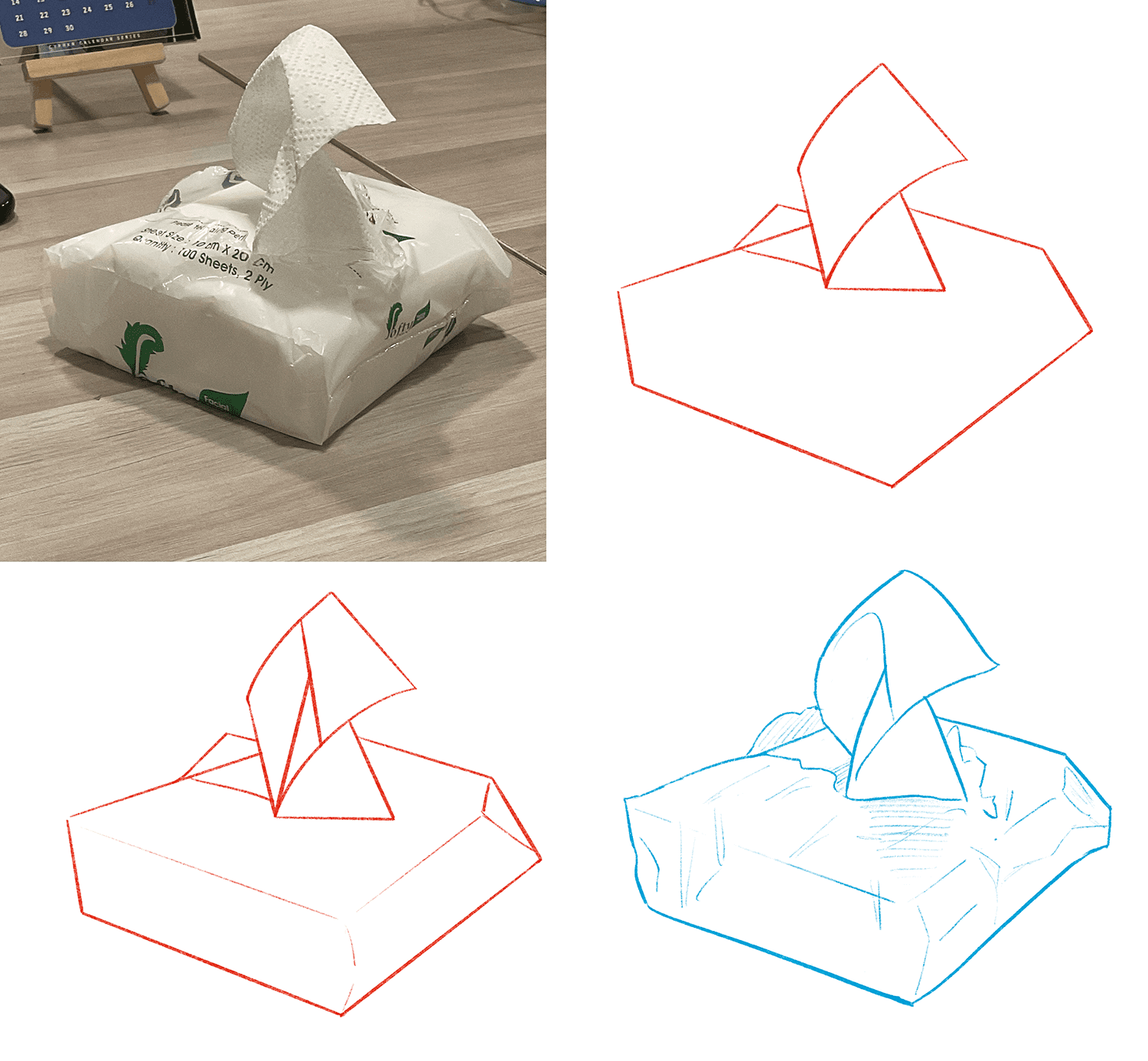
As the final subject, I've used a more complex object, i.e., a pack of tissues. Although it looks more complex than the last two subjects, it still follows the same principle and concept. We'll first break it down into simple geometric shapes. Then, we will build more shapes onto it until it is further simplified. Ultimately, we will connect the shapes and add the final details!
Conclusion
The concept of shapes is a great asset for artists of all levels. It helps you build a strong foundation for your artwork, create balanced compositions, and effectively communicate your ideas. While this concept allows the artist to tackle their ideas more simply, it also makes their ideas seem significantly less intimidating to approach.
So, the next time you grab your sketchbook, remember to simplify; don't complicate!
Thank you for reading and I hope this article helps you on your art journey!
